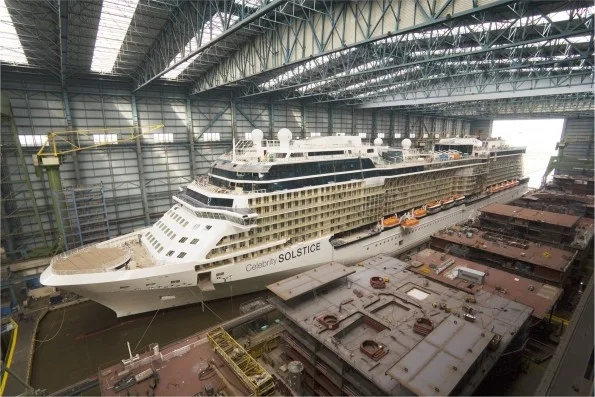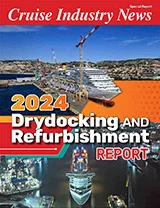 Naval architects and cruise-ship designers are usually fairly conservative in speculating about the next generation of ships – for good reason. New ships require an enormous investment. Venturing too far on a limb could result in a very ugly – and public – fall if a revolutionary concept did not work out.
Naval architects and cruise-ship designers are usually fairly conservative in speculating about the next generation of ships – for good reason. New ships require an enormous investment. Venturing too far on a limb could result in a very ugly – and public – fall if a revolutionary concept did not work out.
But what might ships look like in 10 or 20 years? What fuels and propulsion techniques will they use?
Several naval architects gazed into a crystal ball and speculated about possibilities for the ships of tomorrow.
Once upon a time, passengers ferried across the Atlantic in narrow-bowed ocean liners. The sleek ships sliced through waves with little hydrodynamic drag. As ships evolved from transportation to vacation destinations, that narrow bow bulked up, requiring more power to push through the sea.
In this age of soaring fuel prices, future ships may return to the ocean liner hull design, said Stephen Payne, vice president of newbuilding and senior naval architect for Carnival Corporation
“We’ve already had some discussions about this with Fincantieri,” Payne said, adding that there are some drawbacks. “If you go back more to the old liner hulls, you’ll improve the overall hydrodynamic form, but lose a lot of the space on the ship.”
“A lot of the old liners were built with the curves because they looked good that way,” Payne said. “But the modern ships are built squared off because they’re cheaper to build.”
The most obvious departure from traditional cruise-ship design would be breaking away from the dominance of monohulls.
In 1992, the Radisson Diamond (now Asia Cruises’ Asia Star) was the first true catamaran cruise vessel. At 20,000 tons and a maximum capacity of 354 passengers, the ship is very small by today’s standards.
Egil Jullumstro, senior research engineer at MARINTEK SINTEF, said radical changes in hull design are not far away.
“Looking back at the 40 years of the cruise industry, the overall hull shape has not changed much; it is mainly the size that has changed,” Jullumstro said. “My hope is that in 20 years time we will see cruise ships that have a totally different shape.”
The first big multihull ships aren’t even that far away, Payne speculated – maybe 10 or 15 years for long, sleek trimarans to start appearing.
The obstacles to overcome, however, are at the building and repair yards. A trimaran the length of the Carnival Destiny would be much too wide for most yards, he said.
The big question for the future of cruise ships is in the powerplant.
Fincantieri’s Maurizio Cergol, senior naval architect and cruise vessel chief designer, and Giampiero Lavini, architect and hydrodynamic specialist senior engineer, said alternative fuels currently only have limited application, and may or may not be viable for ships in the future.
“At present, studies regarding the use of biofuel or LNG are under development at the engine makers’ premises. But they are still at a very early stage in the shipbuilding companies and, most probably, they will continue in a pure theoretical base in the future,” Cergol and Lavini told Cruise Industry News.
Designers also need to remember that a cruise is an emotional experience linked with the marine environment, Cergol and Lavini said. The sea should always be in the background, they said. “The ship is only one component of such an experience. It should give the comfort and the ambience of contemporary hotels but without simply cloning land-based resorts or modern shopping malls.”
Excerpted from Cruise Industry News Quarterly Magazine: Fall 2008




